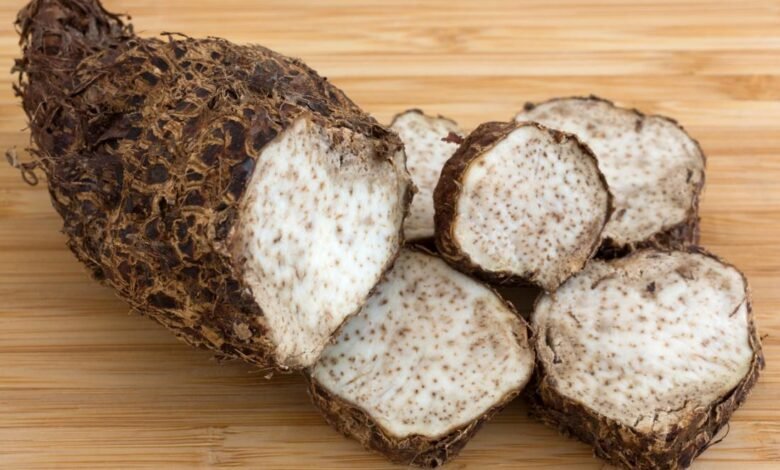Malanga: The Tropical Superfood You Need to Know About

In the numerous worlds of root veggies, malanga emerges as an extremely good and nutritious preference, often overshadowed by its extra familiar counterparts like potatoes and taro. Native to South America, malanga root is a tropical treasure rich in B nutrients and complicated carbohydrates, setting itself apart with a unique taste and a multitude of fitness advantages.
A Flavorful Journey Through the Tropics
Malanga root, often dubbed “the potato of the tropics” gives a culinary experience that ventures beyond the normal. Its wealthy, nutty taste, coupled with a mild sweetness, distinguishes it from different root greens, along with its close relative, taro. Unlike taro’s softer, barely slimy texture, malanga is firm and dry, supplying a flexible base for several dishes. From boiling and baking to roasting and mashing, malanga adapts to your culinary needs even by supplying a distinct flavor and perfume that is nuttier than its counterparts.
Nutritional Powerhouse
Beyond its unique flavor and texture, malanga is a dietary powerhouse. It serves as an extraordinary source of strength, fiber, and crucial minerals, contributing to numerous physical functions:
- Energy Support: With two hundred energy consistent with serving, malanga gives a considerable energy enhancement to fuel your daily activities.
- Digestive Health: The 7.24 grams of fiber in Malanga resource in keeping wholesome bowel movements, levels of cholesterol, and blood sugar levels.
- Bone and Muscle Health: Minerals like calcium (25.6 mg), magnesium (42.6 mg), and phosphorus (108 mg) play crucial roles in constructing and maintaining strong bones, as well as assisting coronary heart, muscle, and nerve fitness.
- Hydration and Blood Pressure: The excessive potassium content material (683 mg) in malanga enables in hydrating the frame, preserving cell fluid balance, and supporting right blood stress and muscle contraction.
Precautions and Considerations
While malanga is normally secure for most people, people with excessive potassium degrees have to exercise caution. Excessive potassium consumption can result in hyperkalemia, a condition characterised utilizing muscle weakness, fatigue, irregular heartbeat, and in severe instances, more vital symptoms like seizures and coma.
Culinary Delights with Malanga
Malanga must never be consumed raw because of its tough-to-digest complex carbohydrates. Cooking transforms malanga into a delightful factor, ideal for boiling, baking, roasting, and even frying into crispy fries. Whether you’re seeking to make a hearty stew or a simple aspect dish, malanga gives you a versatile option to explore new flavors and textures in your cooking.
Where to Find Malanga
With its developing recognition in the United States, malanga is becoming more reachable in grocery stores nationwide. From Kroger to Walmart, and even online produce stores, you’re likely to discover malanga available for your next culinary journey.
Conclusion
Malanga root is greater than only a substitute for potatoes or yuca; it is a versatile, nutritious, and scrumptious root vegetable that merits a gap in your kitchen. Its particular taste profile, blended with several fitness benefits, makes malanga an extraordinary desire for those looking to diversify their diet with tropical flavors. Remember to revel in malanga carefully, particularly in case you’re monitoring your potassium intake, and discover the wide variety of dishes this notable root vegetable can offer.



